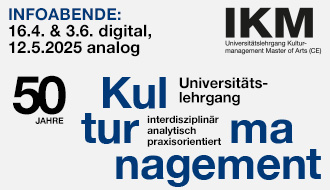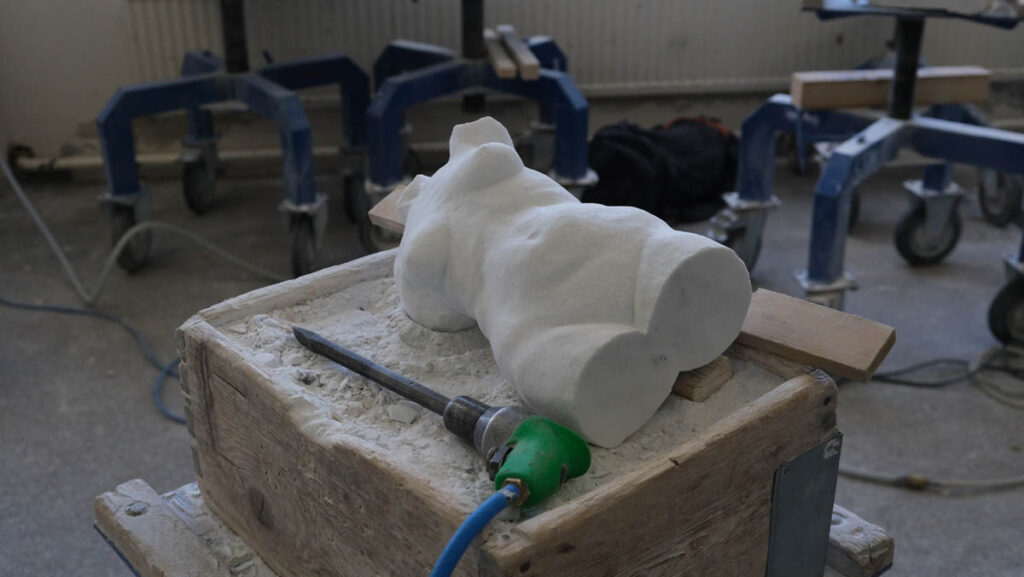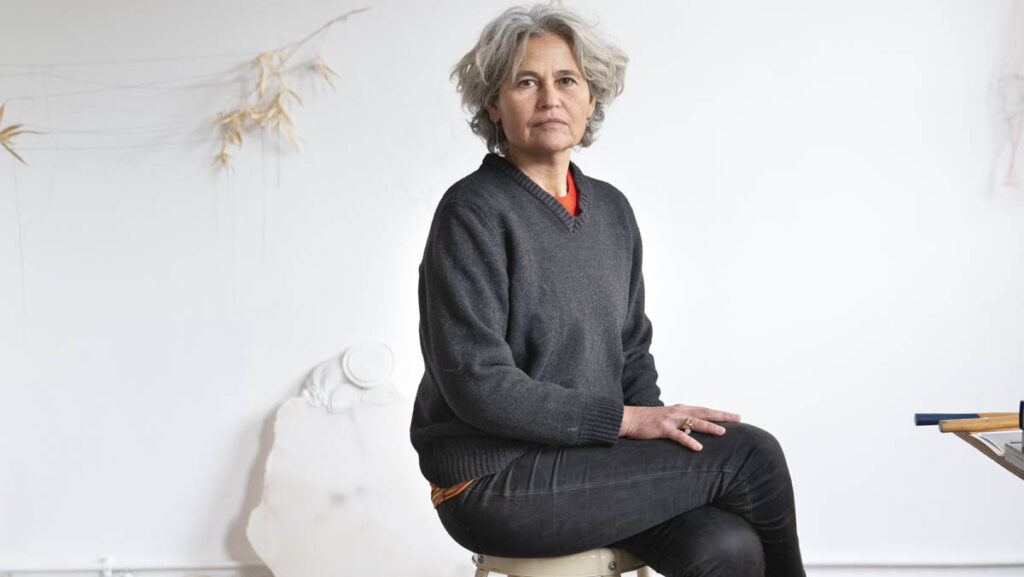
Congratulations on winning the Kunsthalle Wien Preis [Kunsthalle Wien Prize] for your final master’s project at the TransArts Class of the University of Applied Arts Vienna. What impact do you think this prize will have on your future career?
I have been living and studying in Vienna for the past four years, and the exhibition at Kunsthalle Wien is my first major institutional exhibition here. Until now, my exhibitions have primarily taken place outside Austria, mostly in Germany or elsewhere. Having recently completed my studies at the University of Applied Arts Vienna, this opportunity to present a substantial body of work in an institutional context at Kunsthalle Wien feels very meaningful. I am very excited about it!


Travel plays a crucial role in your work. Many of your projects strongly focus on location and the interplay of transition and transformation, both fictional and physical. Could you describe the process behind ULTRA ALL INCLUSIVE, the project that earned you the Kunsthalle Wien Preis [Kunsthalle Wien Prize]?
I discovered the Kremlin Palace Hotel during research for my long-term project, „Aren’t you afraid to swing on Russian swings?“ which will develop into a documentary film. During this research, I came across the concept of „duplitecture“—architecture designed as a copy of an original structure—and this led me to explore replicas of the Moscow Kremlin. One such replica is in Antalya, Turkey—a five-star hotel referred to as a „parody“ Kremlin. At this hotel, I was able to fly a drone over the Kremlin Palace, something that would be impossible in Moscow. I found this fascinating because the Kremlin, as a symbol, is deeply tied to authoritarian power, propaganda, and—since 2022, at the latest—associations with terror. Yet here surrounded by pools and palm trees it got recontextualized into a „wellness apparatus “. This absurd transformation became the starting point for my work. I traveled there as an „undercover vacationer.“ While I wouldn’t voluntarily choose to go there to relax, I went there to explore the site, study architecture, and observe the people who vacation there. What does this place feel like? What programs surround this concept? I stayed there undercover for seven days, nonstop filming and photographing nonstop. No one noticed me because I blended in as just another tourist.
It was almost as if you were there in the role of a spy.
Yes, I thought, “I could just stay in hotels from now on, making films and creating work solely about hotels.” This year, I ended up staying in two more hotels for other projects. It has unintentionally turned into a „hotel year“ for me.

Where else have you stayed this year?
I traveled to China in October for the project I created for the show at Kunsthalle. I stayed at a hotel near the China–Russia border, where I shot footage for a new film. It wasn’t just about the hotel but also the city called Manzhouli. I shot another film in China. Ironically, while I was officially on a residency in Paris, I spent a few days filming in Tianducheng, —a „fake Paris“ located in Hangzhou, China. From my hotel, I had a direct view of the Chinese replica of the Eiffel Tower. I ended up creating a film in this „fake Paris“ while being officially based in the „real“ Paris. This interplay of documentary, research, and fiction—or parafiction—is central to my work. It’s about replicas, doppelgängers, and the blurred boundaries between reality and simulation.
This idea of doppelgängers was already evident in your work RESUSCI ANNE, where you explored both fictional and true stories about two women connected to violence and tragedy. You positioned yourself in the middle, almost performing them both. There’s a strong parafictional narrative and a fluid approach to identity in that work as well.
Yes, I’ve realized this theme runs through all my works. There are always these figures that seem to merge into one, and I become their mediator —or even one of them. While my current projects focus on architecture and politically charged monuments, the method remains the same as I used in RESUSCI ANNE.

Your works also seem to explore entertainment and fantasy while addressing heavy historical, political, or social themes. For example, your monumental aluminum installation for ULTRA ALL INCLUSIVE feels like a keychain souvenir, echoing what we saw in your project exploring „fake Paris“ in China. This playful yet layered aesthetic feels both nostalgic and critical. Where did this come from?
I’m fascinated by that aesthetic, though I’m also cautious of its nostalgic pull. It’s charged with personal and collective memory but clashes with darker, more complex topics. My grandfather’s archive became an important influence on my work. It marked a shift toward incorporating more biographical elements, though this wasn’t a conscious choice —it was shaped by family circumstances and timing. This happened before the war, at a time when everything felt different. I’m not sure if I would choose the same topics now. My grandfather wasn’t filming for an audience or exhibitions; he was driven by something internal, and that fascinates me. I try to channel a similar energy. Starting from his archive, I began incorporating objects from his videos that connected to my childhood. But those objects also carry a political dimension. In the aftermath of the Soviet Union’s collapse, these objects were charged with political significance, flooding homes, and markets and reflecting a whole new reality tied to consumerism. But there’s this real tension, you know? Like, the hopes people attached to them—Western ideas of democracy and progress—didn’t quite match the reality that came after. It’s a fascinating discrepancy.

Your long-term project around your grandfather’s video archive „Aren’t you afraid to swing on Russian swings?“ seems to be driven by this tension. Can you tell us more?
The title of the film is based on a moment in my childhood in 1996 when my grandfather asked me that exact question while filming me on an old precariously bent Soviet swing. What seemed like an innocent moment at the time now holds deeper layers of meaning, reflecting economic instability, social transformation, and the impact of the current war. Recently, I retraced his footsteps to Mongolia, where he traveled extensively in the 1990s as a shuttle trader, importing toys and counterfeit clothing while navigating survival in the aftermath of the Soviet Union’s collapse.



I feel your work resonates with post-structuralist ideas, particularly the concept of simulacrum. Do theoretical frameworks play an important role in your practice?
Every project starts with an object or idea that ties into something I’m already exploring. From there, I delve deeply into research—reading, watching films, and gathering materials. The connections between these references form a web that guides the work’s development. Writing essays alongside creating video works is also an integral part of my process, though my writing often remains in the shadow of the visuals.
How do you balance your professional and private life? Do you separate them?
No, I don’t draw a line between the two, and I love it that way. Each new work presents a challenge—both artistically and personally—and I believe that feeling fear or a certain thrill during the process, whether in creating or conceptualizing the work, is a positive force that drives me forward.

What can we expect to see from you at the Kunsthalle Wien exhibition?
I’ll be presenting a body of work centered around the archive, including four works in total. I’ll also show „Aren’t you afraid to swing on Russian swings?“ in a new installation-based format— a sculptural approach I’m eager to explore further. Additionally, the exhibition will also include a completely new three-channel video installation based on my travels to Mongolia called „MADE IN CHINA“. The sound for this work is a collaboration with Paul Ebhart. The city I filmed in––Manzhouli––feels like an ideological theme park, filled with architecturally fascinating and politically charged monuments that blend Russian and Chinese cultural elements. The heightened interplay of ideology and simulation creates a surreal and almost trippy atmosphere.
Upcoming exhibition: Kunsthalle Wien Preis 2024
Opening: 22. January 2025, 19:00
Exhibition duration: 23. January 2025 – 20. April 2025
Venue: Kunsthalle Wien Karlsplatz, www.kunsthallewien.at
Ida Kammerloch – www.idakammerloch.net, www.instagram.com/idakammerloch
Ida Kammerloch (b. 1991, Izhevsk) has held exhibitions and screenings of her work at ok transit, Vienna (2024); Kunsthalle Düsseldorf; Städtische Galerie Neunkirchen (both 2023); Städtische Galerie Hannover; Kunstmuseum Bonn (both 2021); Hilbertraum, Berlin; Stadtgalerie Saarbrücken; and Kubus Bochum (all 2020). She has been awarded various scholarships by the Austrian Federal Ministry for Arts, Culture, the Civil Service, and Sport (BMKOES); Karl Schmidt-Rottluff Scholarship (all 2022); DAAD, Moscow (2020); and she was awarded the Peter and Luise Hager Prize (2017) as well as second place in Ö1 Talentestipendium (2024), in 2024, Kammerloch was participating in the Cité Internationale des Arts Paris residency.





